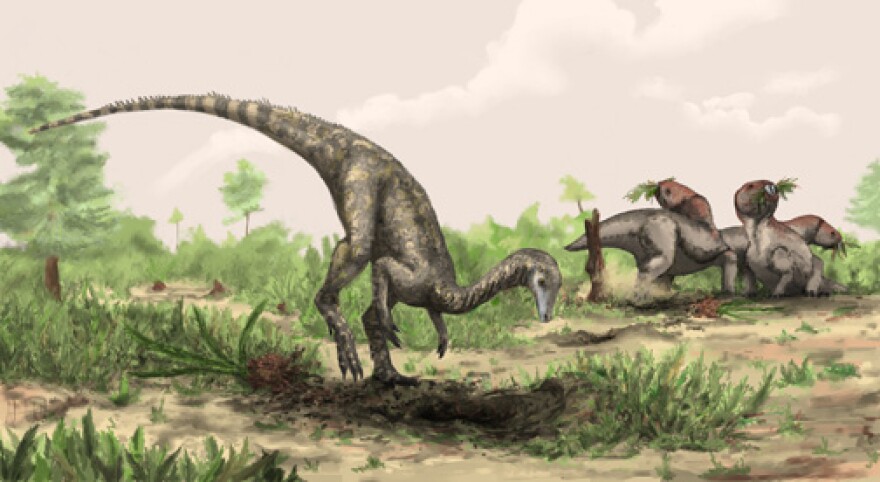A researcher at the University of Washington says he’s identified the oldest dinosaur ever – pushing back the emergence of dinosaurs by millions of years.
The fossilized bones were discovered back in the 1930s, in Tanzania, in a major find that included a vast collection of specimens. They were gathering dust at the Natural History Museum, London, until the scientist who had custody passed away.
Longest unpublished dissertation ever?
“They were essentially under study for 50 years, and the study was never finished,” says Sterling Nesbitt, a dinosaur expert at the Burke Museum of the University of Washington. He says the London paleontologist, Alan Charig, who was analyzing them apparently would puzzle over those seven mysterious bone fragments, and then he'd forget about them for long periods.
“And right before he passed away, he tried to finish the project, but, unfortunately, he never got to finish it,” says Nesbitt.
New approaches

More recently, Nesbitt and a team from several institutions persuaded the museum director in London to pull the bones out of their box and apply the latest techniques. The team analyzed the fine details of the bones' structure and compared them to other well known fossils.
“Essentially, we are building a family tree using computers,” he says.

Nesbitt himself is an expert on the period 230-250 million years ago when the dinosaur family tree branched off from the crocodile family tree.
Missing link
They argue, in a paper published in the journal Biology Letters, that this species of dinosaur, Nyasasaurus parringtoni, is ten million years older than the oldest known dinosaurs, such as the Eoraptor. That puts it at approximately 240 million years old. It’s sort of a missing link between the pre-dinosaur reptiles, known as archosaurs, and the actual dinosaurs.
(Dinosaurs are a branch coming out of the archosaur tree, like humans are a branch coming off the great ape tree.)
Early dinosaurs tend to look similar – raptors running on two legs. They speculate Nyasasaurus stood about three-feet at the hip, with a neck like an ostrich and a typical, long dinosaur tail.
"We don’t know what it ate, we don’t know the color, we don’t know exactly how long it was. But we can estimate, based on its closest relatives," says Nesbitt.
Video: The man who found the first T-Rex ...
http://www.youtube.com/watch?v=SDpVAZEefHY







